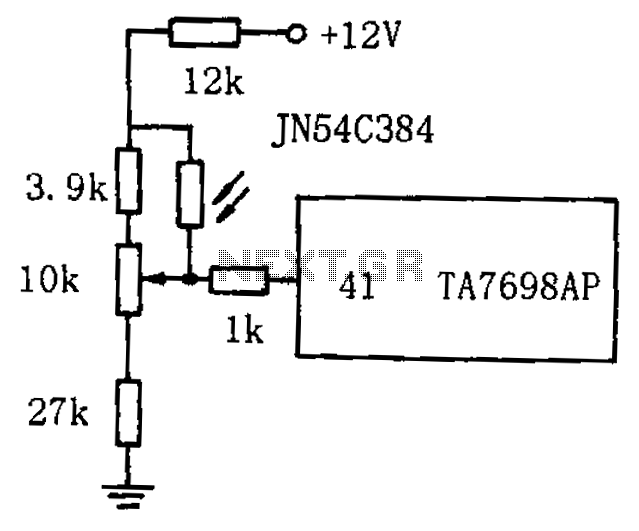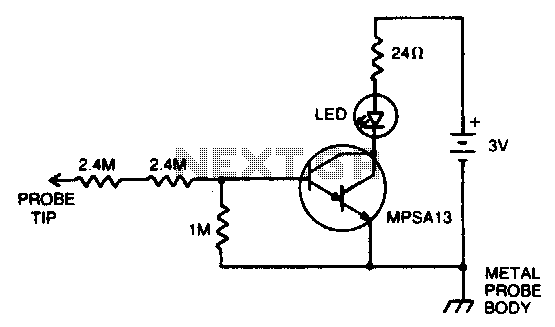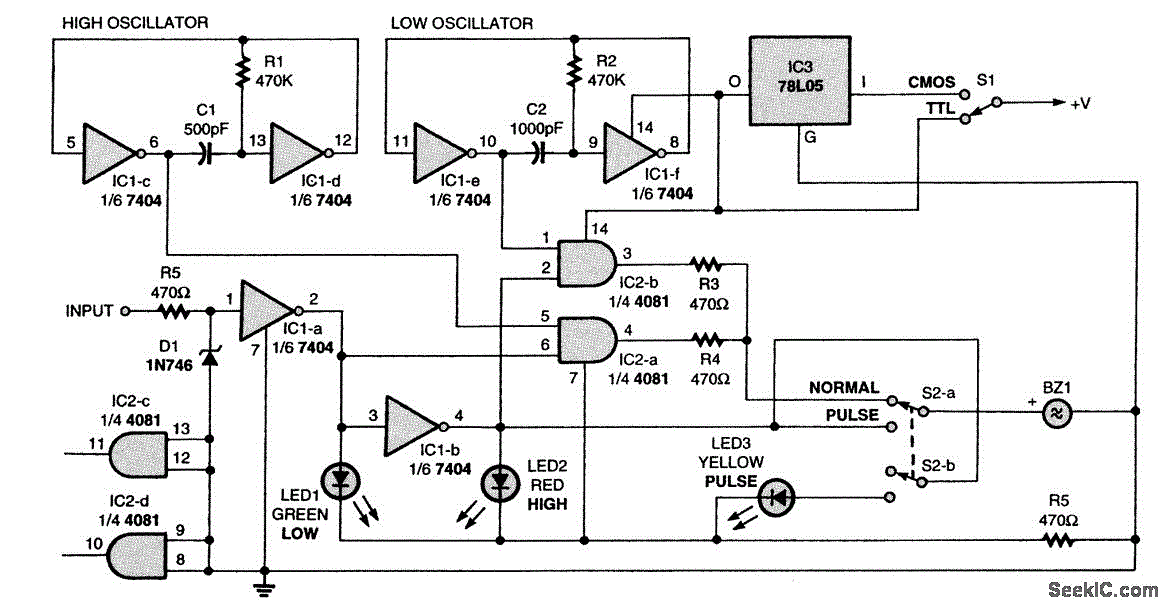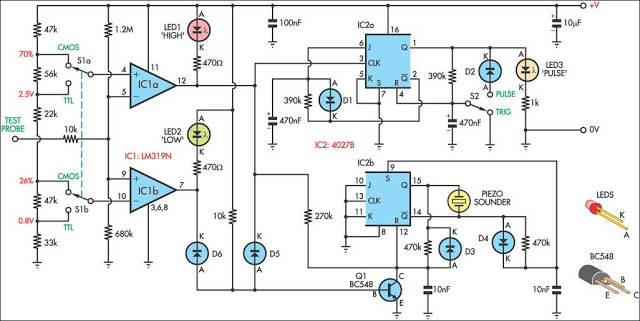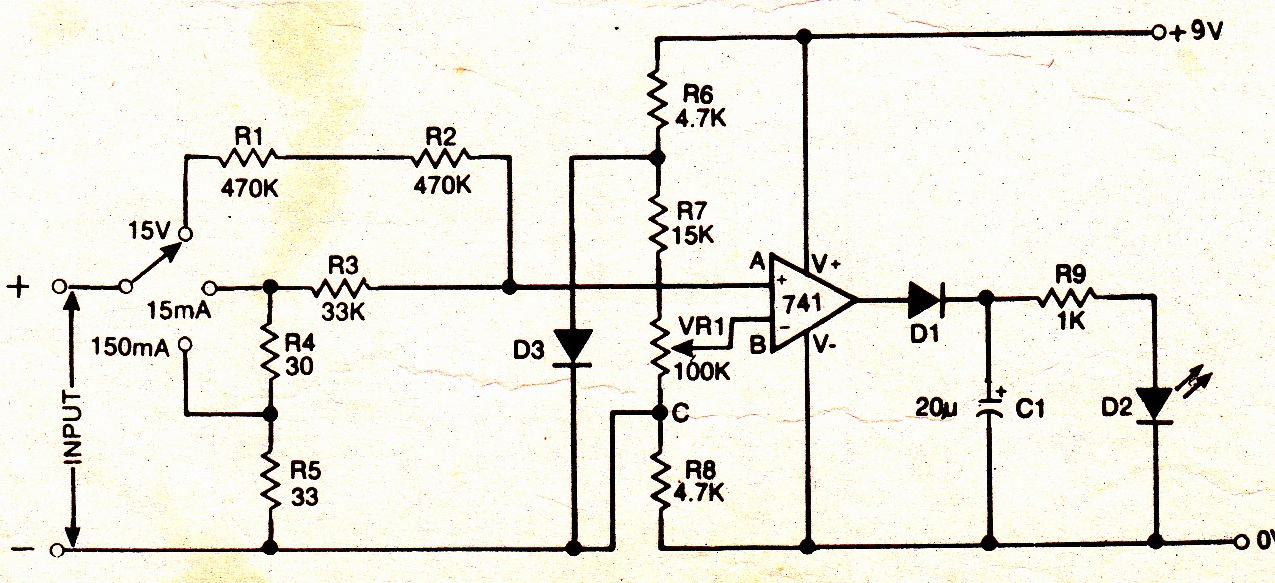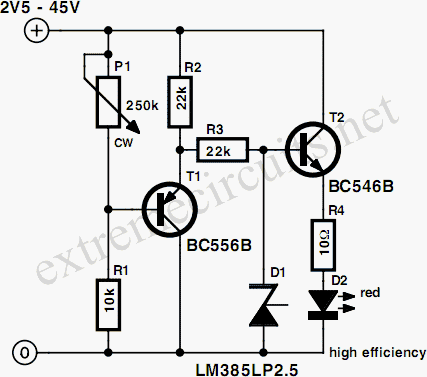
Sensitive RF Voltmeter Probe
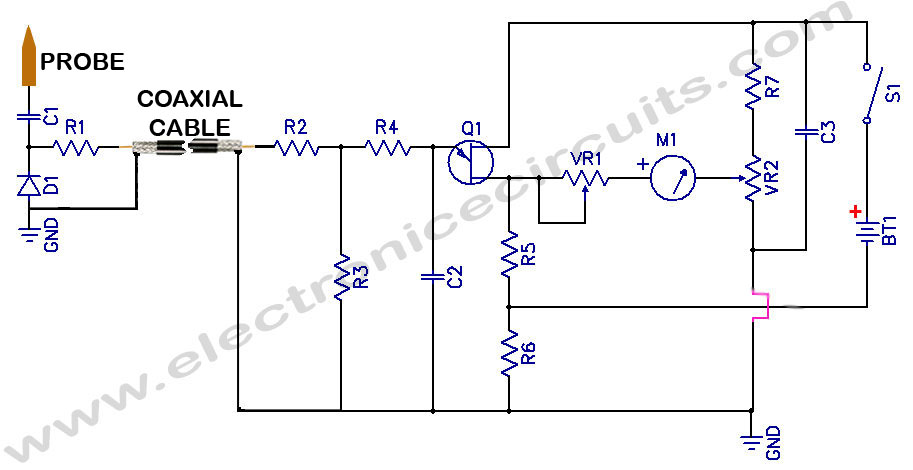
Sensitive RF Voltmeter Probe Circuit. This circuit measures RF voltages beyond 200 MHz and up to approximately 5V.
The sensitive RF voltmeter probe circuit is designed to accurately measure radio frequency (RF) voltages in the range exceeding 200 MHz, with a maximum output voltage of about 5V. This circuit typically employs a combination of high-frequency components, such as RF amplifiers, diodes, and filters, to ensure precision in voltage measurement at elevated frequencies.
Key components of the circuit may include a high-frequency operational amplifier configured as a voltage follower to minimize loading effects, allowing for accurate voltage readings without significantly affecting the circuit under test. Additionally, a suitable RF detector diode can be utilized to convert the RF voltage to a DC voltage, facilitating easier measurement with standard voltmeter equipment.
To enhance the performance of the probe, it is essential to incorporate proper impedance matching techniques, ensuring that the probe's input impedance aligns with the source impedance. This minimizes reflections and maximizes power transfer, which is critical in RF applications.
Furthermore, the circuit should include filtering components to eliminate unwanted noise and harmonics, ensuring that the measured voltage is representative of the actual RF signal. Capacitors and inductors may be strategically placed to form low-pass or band-pass filters, depending on the specific measurement requirements.
The overall design should consider the layout and shielding of the circuit to prevent interference from external sources, which could skew the measurements. A compact and robust PCB design will help maintain signal integrity and improve the reliability of the RF voltmeter probe circuit in practical applications.
In summary, this sensitive RF voltmeter probe circuit is a specialized tool for accurately measuring high-frequency voltages, making it invaluable in RF testing and measurement environments.Sensitive RF Voltmeter Probe Circuit This Circuit measures RF voltages beyond 200MHz and up to about 5V. PARTS.. 🔗 External reference
The sensitive RF voltmeter probe circuit is designed to accurately measure radio frequency (RF) voltages in the range exceeding 200 MHz, with a maximum output voltage of about 5V. This circuit typically employs a combination of high-frequency components, such as RF amplifiers, diodes, and filters, to ensure precision in voltage measurement at elevated frequencies.
Key components of the circuit may include a high-frequency operational amplifier configured as a voltage follower to minimize loading effects, allowing for accurate voltage readings without significantly affecting the circuit under test. Additionally, a suitable RF detector diode can be utilized to convert the RF voltage to a DC voltage, facilitating easier measurement with standard voltmeter equipment.
To enhance the performance of the probe, it is essential to incorporate proper impedance matching techniques, ensuring that the probe's input impedance aligns with the source impedance. This minimizes reflections and maximizes power transfer, which is critical in RF applications.
Furthermore, the circuit should include filtering components to eliminate unwanted noise and harmonics, ensuring that the measured voltage is representative of the actual RF signal. Capacitors and inductors may be strategically placed to form low-pass or band-pass filters, depending on the specific measurement requirements.
The overall design should consider the layout and shielding of the circuit to prevent interference from external sources, which could skew the measurements. A compact and robust PCB design will help maintain signal integrity and improve the reliability of the RF voltmeter probe circuit in practical applications.
In summary, this sensitive RF voltmeter probe circuit is a specialized tool for accurately measuring high-frequency voltages, making it invaluable in RF testing and measurement environments.Sensitive RF Voltmeter Probe Circuit This Circuit measures RF voltages beyond 200MHz and up to about 5V. PARTS.. 🔗 External reference
